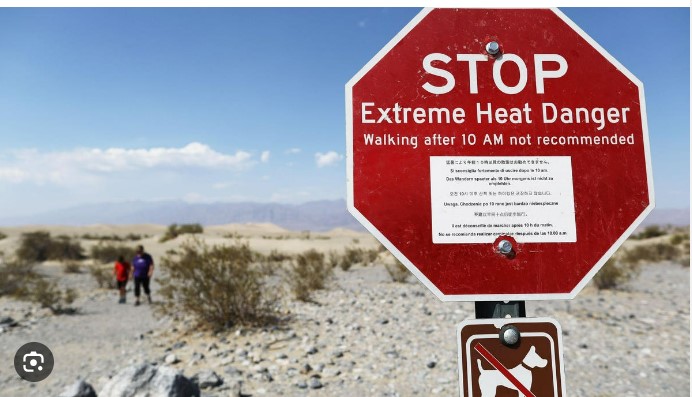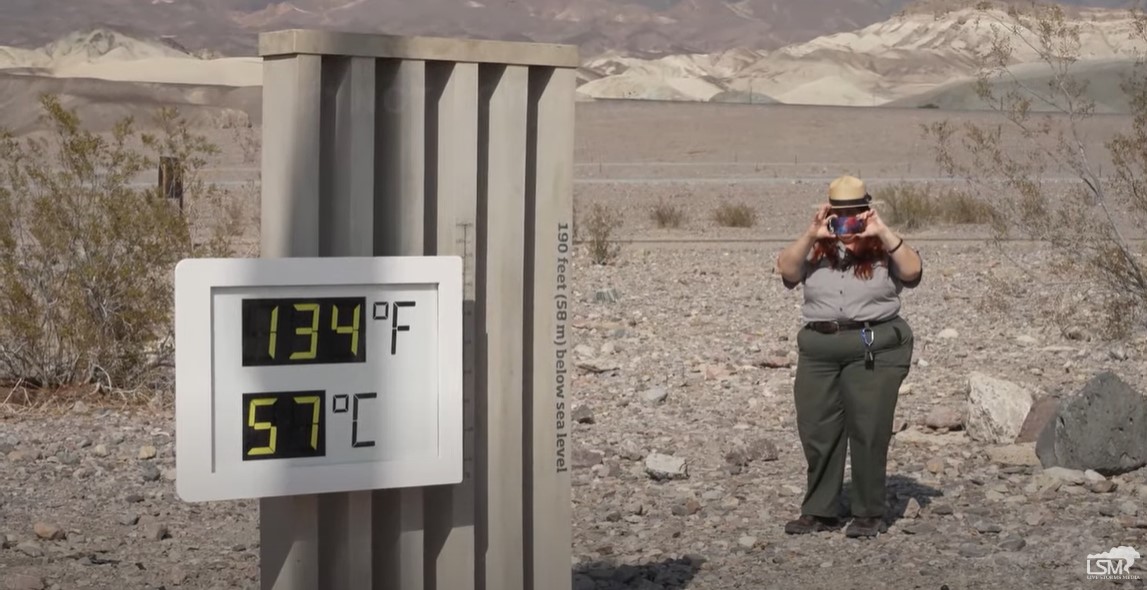When they say that Death Valley is a tourist hotspot, they’re not kidding! But this time they’re not referring to the popularity of the destination but the scorching temperatures that are about to break all previous records.
And as this becomes more likely, tourists want to be able to say, “I was there when it happened.”
Folks are flocking to Furnace Creek, where the visitor center is located and keeping a keen eye on the thermometer to snap that historic picture.
The heat is expected to hit a high of 131 degrees Fahrenheit on Sunday, setting a world record for the hottest temperature ever reliably recorded, the National Weather Service told the news outlet. Even the low that night is projected to top the three-digit mark.
Death Valley is the lowest, hottest and driest place on Earth.
Earlier this week, German tourist Daniel Jusehus snapped a photo of the famed thermometer at the visitor center after challenging himself to a run in the sweltering heat.
“I was really noticing, you know, I didn’t feel so hot, but my body was working really hard to cool myself,” said the avid runner whose photo showed the thermometer reading 120 degrees — well below the expected record.
The hottest temperature recorded at Death Valley, which sits nearly 300 feet below sea level in the Mojave Desert, was 134 degrees in July 1913, according to the park service.

But scientists have come to doubt the accuracy of that reading, one of many records from the early 1900s that have come under intense scrutiny by the World Meteorological Organization.
In 2013, the group decertified what had been the world’s all-time hottest temperature — 136.4 degrees — set in Al Azizia, Libya, 90 years earlier after an evaluation found the measurement faulty, the outlet reported.
Christopher Burt, who worked on the WMO decertification team, called the 1913 Death Valley record “100% bogus,” saying an inexperienced temperature observer probably was at fault.
On July 10, 2021, the thermometer registered 135 degrees, but that too was not deemed to be official. This leaves room for a new record to be set if the temperature exceeds 131.

Physical activity can make the heat even more unbearable at the park, where sunbaked rocks, sand and soil continue to radiate after sunset. “It does feel like the sun has gone through your skin and is getting into your bones,” Park Ranger Nichole Andler said.
At Death Valley National Park, signs warn hikers not to venture out after 10 a.m., and while rangers make patrols, there’s no guarantee lost tourists will be reached in time. In this heat, you hike at your peril.
But despite the many signs posted, there will always be those who love to live on the edge. Good luck!
In the meantime, meteorologists in Las Vegas, another place that is about to set records, warned people not to underestimate the danger. “This heatwave is NOT typical desert heat due to its long duration, extreme daytime temperatures, & warm nights. Everyone needs to take this heat seriously, including those who live in the desert,” the National Weather Service in Las Vegas said in a tweet.
Phoenix marked the city’s 15th consecutive day of 110 degrees Fahrenheit (43.3 degrees Celsius) or higher temperatures on Friday, hitting 116 degrees Fahrenheit (46.6 degrees Celsius) by late afternoon, and putting it on track to beat the longest measured stretch of such heat. The record is 18 days, recorded in 1974.












